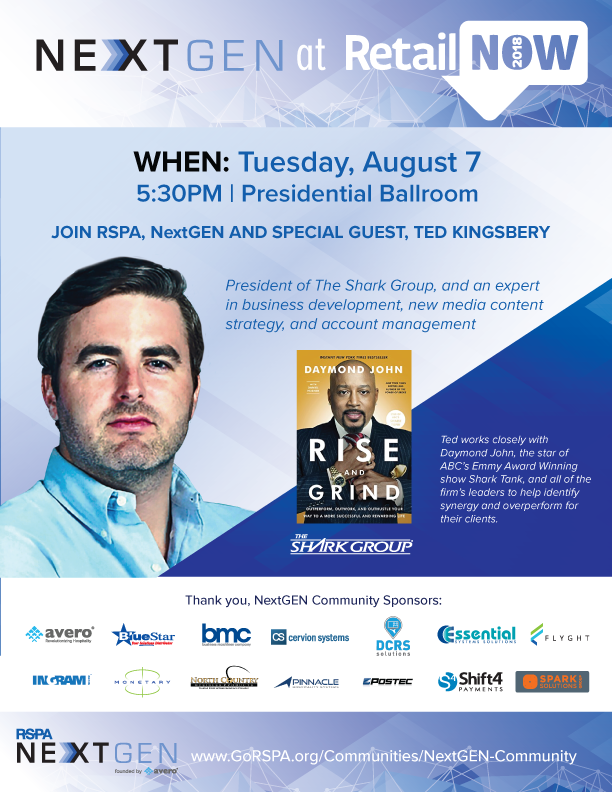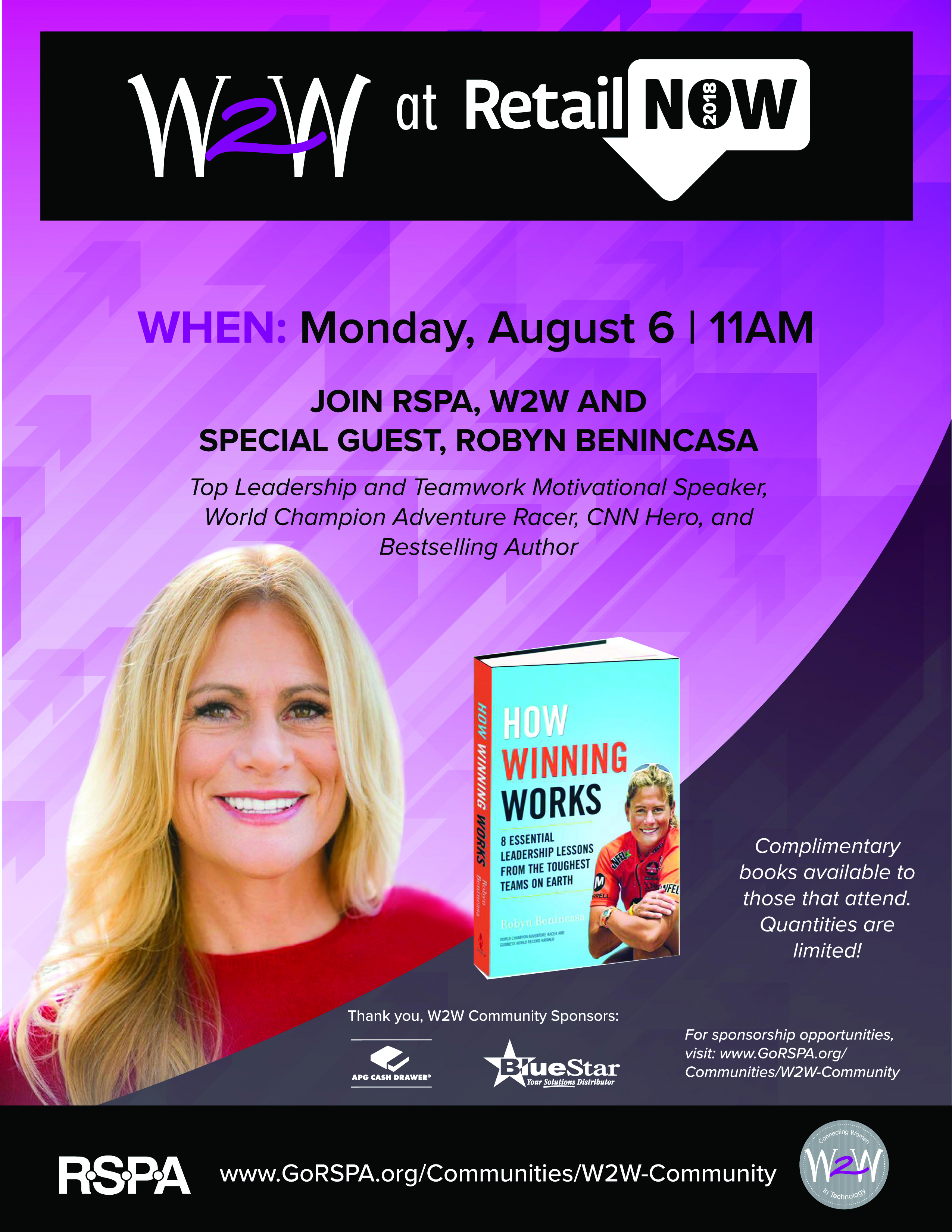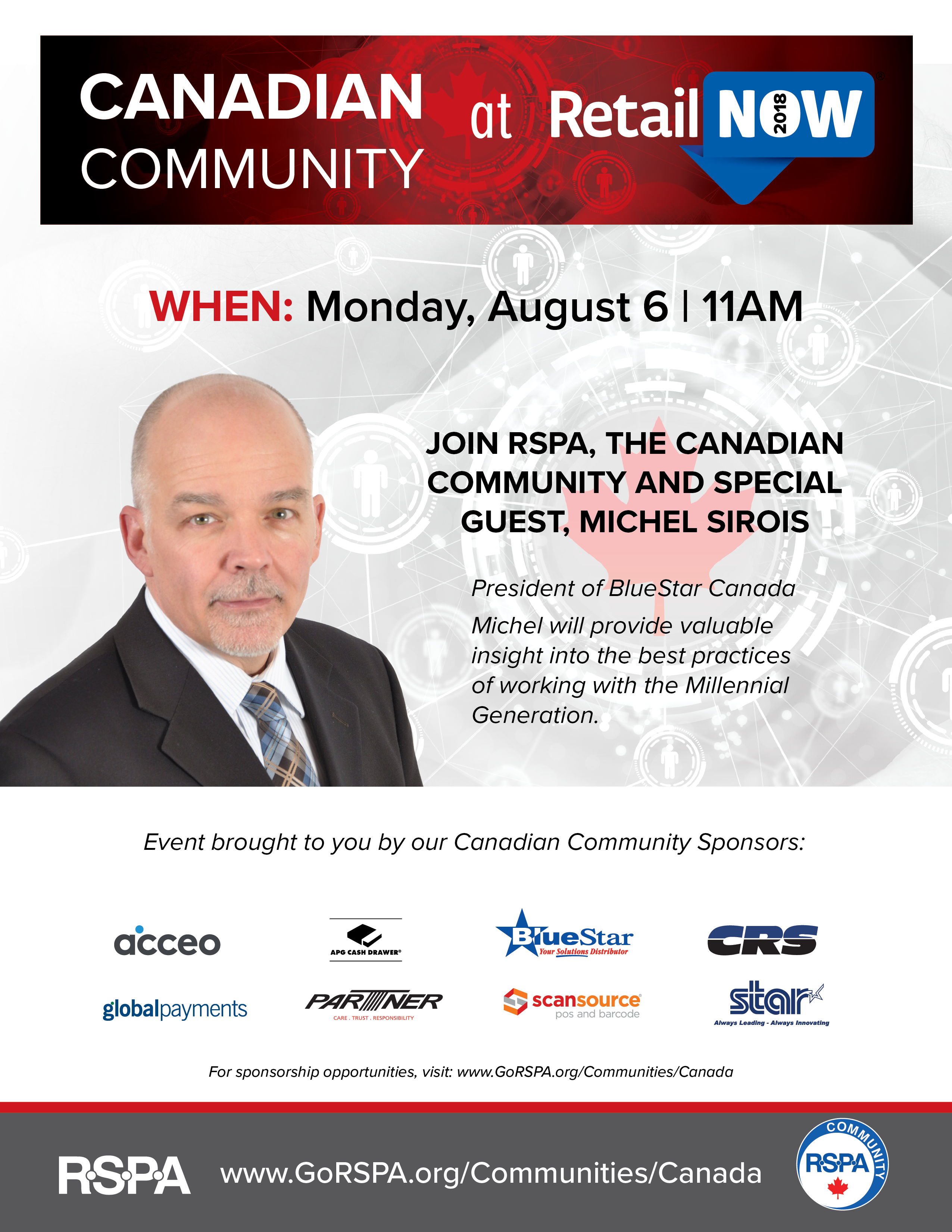In Episode 133 of “The Trusted Advisor,” RSPA CEO Jim Roddy shares his insights on Critical Thinking, both as an important leadership concept as well as the six-step Critical Thinking execution process.
Critical Thinking is the process of determining what you want to accomplish (the outcomes), evaluating what you know, and determining what actions must be taken to achieve that outcome:
- Fully understand the philosophy and process of the best practices.
- Fully understand the situation.
- Clearly define the desired outcomes – business outcomes and emotional outcomes.
- Detail your action plan.
- Evaluate your plan.
- Develop a contingency plan.
“The Trusted Advisor,” powered by the Retail Solutions Providers Association (RSPA), is an award-winning content series designed specifically for retail IT VARs and software providers. Our goal is to educate you on the topics of leadership, management, hiring, sales, and other small business best practices. For more insights, visit the RSPA blog at www.GoRSPA.org.
Watch Episode 133 now:
“The Trusted Advisor” is also available on Amazon Audible, Apple Podcasts, YouTube Podcasts, and Spotify, subscribe today!
Full episode transcript via Apple Podcasts:
00:00:07.575 –> 00:00:15.135
Roddy: Welcome to another episode of The Trusted Advisor podcast and video series, powered by the Retail Solutions Providers Association.
00:00:15.135 –> 00:00:20.715
Roddy: Our goal on the pod is to accelerate the success of today’s and tomorrow’s leaders in the retail IT industry.
00:00:20.715 –> 00:00:22.115
Roddy: I’m Jim Roddy back with you again.
00:00:22.115 –> 00:00:23.895
Roddy: Thank you so much for joining us.
00:00:23.895 –> 00:00:32.035
Roddy: Now, as always, the focus of our podcast is leadership, and today’s the second episode of a new format we’re integrating into our pod lineup.
00:00:32.035 –> 00:00:40.775
Roddy: So the unofficial name for these solo episodes where it’s just you and me talking is a Roddy rant, but what’s different about these rants are three elements.
00:00:40.775 –> 00:00:43.475
Roddy: First, they’re no longer than 15 minutes.
00:00:43.475 –> 00:00:52.555
Roddy: Second, I’m going to share with you a character trade or leadership trade or some of the do’s and don’ts from my book, The Walk-On Method to Career and Business Success.
00:00:52.555 –> 00:00:58.255
Roddy: Then finally, they’re unscripted, so I’m going to detail the character trade or leadership action.
00:00:58.255 –> 00:01:04.555
Roddy: Then we’re going to share my perspective just like I do when an RSPA VAR or ISV leader reaches out to meet for advice.
00:01:04.915 –> 00:01:10.855
Roddy: Now, our other episodes are going to continue to feature leaders discussing their leadership journeys and what they’ve learned along the way.
00:01:10.855 –> 00:01:18.755
Roddy: These solo episodes, these Roddy Rants, they’re going to focus on the key principles that form the foundation of successful leadership.
00:01:18.755 –> 00:01:24.595
Roddy: Now, before I reveal today’s topic, just a couple commercial breaks that we have to share with you.
00:01:24.595 –> 00:01:32.035
Roddy: First, we have to thank our annual RSPA sponsors who support our community and make this podcast and video series possible.
00:01:32.095 –> 00:01:34.455
Roddy: Our Platinum sponsor is Bluestar.
00:01:34.455 –> 00:01:39.855
Roddy: Our gold sponsors are Cocard, Epson, Heartland and ScanSource.
00:01:39.855 –> 00:01:50.835
Roddy: Also, we want to make sure we remind you that registration is now open for RetailNOW 2025, the Retail IT channel’s number one trade show, education conference and networking event.
00:01:50.835 –> 00:01:56.575
Roddy: This year’s event is set for July 27th through 29th at Caesars Palace in Las Vegas.
00:01:56.575 –> 00:02:01.175
Roddy: For more information, visit gorsp.org/retail now.
00:02:01.315 –> 00:02:05.215
Roddy: Again, that’s gorsp.org/retail now.
00:02:05.215 –> 00:02:09.335
Roddy: RetailNOW is where the industry meets.
00:02:09.335 –> 00:02:20.715
Roddy: All right, today’s topic is critical thinking, and that builds upon our prior episode where we talked about the character trait of prudence, and prudence is very much rooted in critical thinking.
00:02:20.715 –> 00:02:24.335
Roddy: So I have a document, I’m going to share a couple highlights with you.
00:02:24.335 –> 00:02:33.995
Roddy: If you want a copy of this six step process for critical thinking, just email me at my first letter J, last name Roddy, jroddy at gorspa.org.
00:02:35.395 –> 00:02:38.495
Roddy: I’d be more than happy to share it with you and talk with you about it.
00:02:38.495 –> 00:02:50.475
Roddy: So critical thinking, to me, this is the most important foundational element that you can have inside your organization for organization health, for making the right decision.
00:02:50.475 –> 00:02:52.055
Roddy: So what is critical thinking?
00:02:52.055 –> 00:03:02.315
Roddy: It’s the process of determining what you want to accomplish, the outcomes, evaluating what you know, and determining what actions must be taken to achieve that outcome.
00:03:02.315 –> 00:03:08.975
Roddy: So when you apply critical thinking, your organization, your company is guided by reasonableness.
00:03:08.975 –> 00:03:19.775
Roddy: It’s not guided by who has more tenure, who has the loudest voice, who’s the owner, who has the most senior title, anything like that.
00:03:19.775 –> 00:03:25.455
Roddy: We should be guided by the principle of it’s not who’s right, it’s what’s right.
00:03:25.455 –> 00:03:30.735
Roddy: And so I’m very overt about critical thinking inside of our organization.
00:03:30.735 –> 00:03:46.455
Roddy: So here at the RSPA, when I was named RSPA CEO a little bit over three years ago, this document that I’m going to give a highlight of right now, this is the first thing that I shared with our leadership team and first thing that I shared with the rest of our organization.
00:03:46.455 –> 00:03:56.655
Roddy: When I first came on board, gosh, it’s so six years now at this point, I started working with Chris Arnold, who’s now our Director of Member Services and Marketing.
00:03:56.655 –> 00:04:01.215
Roddy: And we started off with this document because I want to make it very clear.
00:04:01.215 –> 00:04:08.055
Roddy: It’s not just me calling the shots or me saying, here’s my opinion or I’ve been involved in this industry since 1998.
00:04:08.055 –> 00:04:11.315
Roddy: So sit back, listen to me and start taking notes.
00:04:11.315 –> 00:04:13.235
Roddy: Critical thinking is the guide.
00:04:13.235 –> 00:04:20.995
Roddy: Whether somebody’s on their first day on the job or their third decade on the job, it’s critical thinking that should be guiding your organization.
00:04:20.995 –> 00:04:32.255
Roddy: Now, critical thinking, the process is most important when the answer isn’t clear, when your processes, your procedures don’t say exactly what you should do.
00:04:32.255 –> 00:04:38.975
Roddy: And this is a lot of, if you’re a leader, if you’re an aspiring leader, these are the tough challenges that hit your desk.
00:04:38.975 –> 00:04:43.255
Roddy: If they weren’t difficult, they’d have been solved long before they reached you.
00:04:43.255 –> 00:04:48.135
Roddy: So there are six basic steps of the critical thinking that we’re going to talk about today.
00:04:48.135 –> 00:04:55.275
Roddy: So step number one is fully understand the philosophy and process of the best practice.
00:04:55.275 –> 00:04:58.595
Roddy: The philosophy and the process of the best practice.
00:04:58.595 –> 00:05:02.475
Roddy: You have to zoom all the way out and say, how does the world work?
00:05:02.475 –> 00:05:03.915
Roddy: How does this industry work?
00:05:03.915 –> 00:05:06.495
Roddy: How does the company work?
00:05:06.495 –> 00:05:17.195
Roddy: So you can gather this information from a lot of different sources, whether it’s company documents, your general experience, your colleagues’ general experience, researching, right?
00:05:17.195 –> 00:05:25.555
Roddy: Whether it’s from books or magazines or websites or conversations you’re having, your own life experience and the experience of your coworkers, right?
00:05:25.555 –> 00:05:32.615
Roddy: Before you start forging ahead and saying, here’s step number one, what we should do, you got to zoom all the way out and say, what are the best practices?
00:05:32.615 –> 00:05:36.775
Roddy: Now, this is where if you have experience in the industry, this can really come into play, right?
00:05:36.775 –> 00:05:46.175
Roddy: If you have somebody who’s not familiar with the channel, it’s really hard for them to determine what should be the right action plan because they don’t understand the inner workings of this channel.
00:05:46.175 –> 00:05:52.215
Roddy: But make sure you don’t just go with what you know and say, oh, I’m good, I can start building the action plan.
00:05:52.215 –> 00:05:56.895
Roddy: That’s where step number two is hugely important, fully understand the situation.
00:05:56.895 –> 00:06:01.695
Roddy: You cannot make good decisions while you’re existing in a vacuum.
00:06:01.695 –> 00:06:10.115
Roddy: Even though you might have the experience and understand what the best practices and how you’ve done this 100 times before, this situation is going to have some nuances to it.
00:06:10.455 –> 00:06:16.815
Roddy: It could be radically different or it might be slightly different and you have to make sure you fully understand this situation.
00:06:16.815 –> 00:06:27.175
Roddy: Get all the information that you need, put it out on the table, go and sort through it, and then it’s going to make your decision-making process much, much easier.
00:06:27.175 –> 00:06:35.655
Roddy: The more information you have, I think you realize the less of an actual decision that needs to be made, the less of gut feel that has to come into it.
00:06:35.655 –> 00:06:44.555
Roddy: If you’re unsure of what you should do and how you should move forward, it’s probably a sign that you need to fully understand the situation more.
00:06:44.555 –> 00:06:48.635
Roddy: You need to gather more data, talk to more people, get more information.
00:06:48.635 –> 00:06:54.095
Roddy: So this is the step that most people fall short with in the critical thinking process, right?
00:06:54.095 –> 00:07:04.575
Roddy: They go with what they know, they think they have a full understanding of the situation, but they don’t do the actual work to ask questions, to listen, to get more of that data on the table.
00:07:04.575 –> 00:07:05.055
Roddy: All right.
00:07:05.055 –> 00:07:11.795
Roddy: So step number three is clearly define the desired outcomes, and there are two types of outcomes.
00:07:11.795 –> 00:07:15.895
Roddy: There’s business outcomes and then there’s emotional outcomes.
00:07:15.895 –> 00:07:18.275
Roddy: Oftentimes, we think about the business outcomes.
00:07:18.275 –> 00:07:19.435
Roddy: How am I going to solve this problem?
00:07:19.435 –> 00:07:20.655
Roddy: How are we going to get this thing done?
00:07:20.655 –> 00:07:22.175
Roddy: How am I going to close a sale?
00:07:22.175 –> 00:07:23.535
Roddy: How am I going to make the money?
00:07:23.535 –> 00:07:27.255
Roddy: But you have to understand there’s an emotional outcome as well.
00:07:27.255 –> 00:07:29.355
Roddy: How are you treating your colleagues?
00:07:29.355 –> 00:07:31.835
Roddy: How are you treating that client?
00:07:31.835 –> 00:07:36.755
Roddy: When this decision is made, when it’s implemented on the other end of it, how are people going to feel about it?
00:07:36.815 –> 00:07:37.975
Roddy: How are they going to think about you?
00:07:37.975 –> 00:07:41.475
Roddy: How are they going to think about the organization?
00:07:41.475 –> 00:07:47.555
Roddy: You can’t just say, here’s my one business outcome and my one emotional outcome.
00:07:47.555 –> 00:07:53.835
Roddy: There might be a longer list of business outcomes and emotional outcomes that go along with this.
00:07:53.835 –> 00:07:55.215
Roddy: Again, this is critical thinking.
00:07:55.215 –> 00:07:57.935
Roddy: You don’t actually start with the outcome.
00:07:57.935 –> 00:08:05.415
Roddy: You fully understand the situation first, and only then can you say, okay, now I think I know where the target is for what I’m going to do.
00:08:06.455 –> 00:08:12.535
Roddy: And then once you have that target, then you can start getting into detailing your action plan.
00:08:12.535 –> 00:08:16.675
Roddy: The what, the who, and the when.
00:08:16.675 –> 00:08:17.975
Roddy: All three elements of it.
00:08:17.975 –> 00:08:20.535
Roddy: And so I suggest a lot of times people start with the who.
00:08:20.535 –> 00:08:21.855
Roddy: They say who, what, when.
00:08:21.855 –> 00:08:28.075
Roddy: I suggest you start with the what, because the what might determine who actually executes on that.
00:08:28.075 –> 00:08:33.855
Roddy: If the what is something that falls more on the sales side of the business, well, you should probably have somebody in sales do that.
00:08:33.915 –> 00:08:37.575
Roddy: If the what falls more on operations, then you should have somebody do that.
00:08:37.575 –> 00:08:44.115
Roddy: If the what is way more complex and it requires somebody with experience to do it, you might have two people doing it.
00:08:44.115 –> 00:08:50.835
Roddy: So when you’re talking about your action plan, it’s the what, then who, and you also have to talk about when.
00:08:50.835 –> 00:08:56.255
Roddy: You can’t say whenever you get around to it or soon or at your convenience.
00:08:56.255 –> 00:09:03.995
Roddy: Start putting in some sort of milestones, some sort of deadlines, so everybody is on the same page in terms of the action plan.
00:09:03.995 –> 00:09:18.315
Roddy: If you simply say this needs to be done soon, soon for you might mean by the end of the day or the end of the week, but soon for the person you’re giving the direction to or you’re working with to determine the action plan, they might think it’s the end of the month.
00:09:18.315 –> 00:09:25.275
Roddy: So the more specific you can get on your action plan with the what, the who, and the when, the better off you’re going to be.
00:09:25.275 –> 00:09:27.235
Roddy: Now I say that with a caveat.
00:09:27.555 –> 00:09:34.495
Roddy: You want to make sure you give guidance, that somebody doesn’t have to write out a 100 page battle plan in order to move forward.
00:09:34.495 –> 00:09:38.615
Roddy: I still remember when I supervise an employee, they do a good job of communicating this.
00:09:38.615 –> 00:09:46.055
Roddy: I asked them to put together an action plan for moving forward on a couple of things that they had to improve on in their organization.
00:09:46.235 –> 00:09:49.755
Roddy: So we talked about on a Friday, he said, I’ll have it ready for you on Monday.
00:09:49.755 –> 00:09:51.315
Roddy: I thought, no problem at all.
00:09:51.315 –> 00:09:54.335
Roddy: This is an exercise that should only take a handful of minutes.
00:09:54.335 –> 00:10:00.215
Roddy: We meet Monday morning, he’s bleary-eyed, he’s like, management is so difficult to sleep trying to put this whole thing together.
00:10:00.215 –> 00:10:03.715
Roddy: I’m like, I can’t believe, why would it take you so long in order to do that?
00:10:03.715 –> 00:10:08.735
Roddy: Well, he came back with a document, I think it was about 17 pages long.
00:10:08.735 –> 00:10:14.235
Roddy: I was like, oh my gosh, this is not what we were looking for, is every single nuance.
00:10:14.235 –> 00:10:16.775
Roddy: Step number one, turn on computers.
00:10:16.775 –> 00:10:18.695
Roddy: Step number two, login.
00:10:18.695 –> 00:10:20.175
Roddy: It was way too detailed.
00:10:20.175 –> 00:10:30.455
Roddy: So make sure when you were working on the action plan, if you’re delegating elements of it or you’re delegating the action plan to somebody, you talk through about the length that it should be.
00:10:30.455 –> 00:10:35.615
Roddy: I tell people a lot of times, I’m not looking for an action plan that covers A through Z.
00:10:35.615 –> 00:10:43.035
Roddy: Let’s talk about ABCD and then we can go and figure out what happens after we get through the first four steps.
00:10:43.035 –> 00:10:46.435
Roddy: And that ties in with the fifth step of critical thinking.
00:10:46.435 –> 00:10:48.395
Roddy: Evaluate your plan.
00:10:48.395 –> 00:10:51.315
Roddy: And then step number six is develop a contingency plan.
00:10:51.315 –> 00:10:52.755
Roddy: So I’ll take two of those together.
00:10:53.315 –> 00:10:55.055
Roddy: So one, evaluating your plan.
00:10:55.055 –> 00:11:04.415
Roddy: Oftentimes, we have rose-colored glasses when we look at our own action plans, our own work, and then we’re way more critical when we look at somebody else’s.
00:11:04.415 –> 00:11:15.815
Roddy: So if you’re the one task, if you’re putting together an action plan, I suggest you talk it through with somebody else, because you’re going to look at your plan and go, genius, this is going to work 100 percent.
00:11:15.815 –> 00:11:16.795
Roddy: Absolutely.
00:11:16.795 –> 00:11:23.275
Roddy: You want to make sure you go to somebody skeptical, somebody who can ask you questions, who can stress test your plan.
00:11:23.275 –> 00:11:26.895
Roddy: Evaluate itself, evaluation, have somebody evaluated as well.
00:11:26.895 –> 00:11:31.835
Roddy: Is this going to achieve the outcomes that we outlined earlier?
00:11:31.835 –> 00:11:35.815
Roddy: Then the last step again, it dies in, it’s develop a contingency plan.
00:11:35.815 –> 00:11:44.215
Roddy: As you’re talking through, as you’re doing the skeptical approach to it, you’re saying, okay, every single element that is planned might not work.
00:11:44.215 –> 00:11:45.355
Roddy: What’s going to happen?
00:11:45.355 –> 00:11:49.015
Roddy: How are we going to adjust if things don’t fit in perfectly?
00:11:49.135 –> 00:11:53.075
Roddy: So you should always be walking into it with some sort of a backup plan.
00:11:53.075 –> 00:11:54.635
Roddy: Think about a football coach.
00:11:54.635 –> 00:12:00.155
Roddy: They don’t script out the first 10 plays of the game and go, this is what we’re going to do come heck or high water.
00:12:00.155 –> 00:12:07.875
Roddy: Because the first play of the game, the snap could go over the quarterback’s head, and suddenly you’ve lost 15 yards and you’re facing, what would it be, second and 25.
00:12:07.875 –> 00:12:14.835
Roddy: Well, if your second plan in your script was, we’re going to run to the left off tackle, that might not get you closer to the first down.
00:12:14.835 –> 00:12:18.215
Roddy: So you have to have that contingency plan.
00:12:18.875 –> 00:12:20.735
Roddy: Here’s something that’s really important.
00:12:20.735 –> 00:12:27.815
Roddy: This, I just went through the six step process for critical thinking, but it’s not that you get to six and you’re done.
00:12:27.815 –> 00:12:31.795
Roddy: You have to then go back to step number one all over again.
00:12:32.075 –> 00:12:33.475
Roddy: Do I understand the best practices?
00:12:33.735 –> 00:12:36.135
Roddy: I’ve started to execute this action plan.
00:12:36.135 –> 00:12:38.595
Roddy: Now I have a better understanding of the situation.
00:12:38.595 –> 00:12:40.175
Roddy: Do I have to adjust my outcomes?
00:12:40.875 –> 00:12:44.915
Roddy: Or then do I have to adjust my action plan based on what I’ve learned?
00:12:44.915 –> 00:12:48.955
Roddy: Then you’re evaluating your plan, you’re doing the critical thinking that goes along with it.
00:12:48.955 –> 00:12:50.255
Roddy: This is where it’s so important.
00:12:50.255 –> 00:12:56.835
Roddy: The folks who I always say, try, test, measure, adapt, that is fully rooted in critical thinking.
00:12:56.835 –> 00:13:07.695
Roddy: Start with the first four steps of your plan, learn something, go back, you’ve gathered more data, evaluate your outcomes, evaluate your action plan, adjust, start doing it again.
00:13:07.695 –> 00:13:09.795
Roddy: You’re going to learn more and go back and do it.
00:13:09.875 –> 00:13:14.235
Roddy: It is a virtuous cycle when you run through critical thinking.
00:13:14.235 –> 00:13:20.355
Roddy: The last note is you’ll see on this critical thinking document, if you email it for me, it says, your opinion doesn’t matter.
00:13:20.355 –> 00:13:28.435
Roddy: And I know that sounds rude, but to me, it’s a funny and memorable way of saying, you can’t just say, I have an opinion and I think we should do this.
00:13:28.435 –> 00:13:31.555
Roddy: Your opinion should be rooted in critical thinking.
00:13:31.555 –> 00:13:36.015
Roddy: My opinion should be rooted in critical thinking, your colleague’s opinion should be rooted in critical thinking.
00:13:36.395 –> 00:13:40.675
Roddy: That’s why, to me, this is so foundational to your organization.
00:13:40.675 –> 00:13:40.955
Roddy: All right.
00:13:40.955 –> 00:13:46.775
Roddy: And again, if you want a copy of this critical thinking document, just shoot me an email at jroddy at gorsp.org.
00:13:46.775 –> 00:13:48.635
Roddy: I’m more than happy to share it with you.
00:13:48.635 –> 00:13:53.115
Roddy: Critical thinking, again, the foundation to a healthy organization.
00:13:53.115 –> 00:13:55.535
Roddy: That does it for this episode of The Trusted Advisor.
00:13:55.535 –> 00:14:02.935
Roddy: If you enjoyed our discussion, be sure to subscribe to the RSPA YouTube channel and The Trusted Advisor podcast so you never miss an episode.
00:14:02.935 –> 00:14:08.155
Roddy: Before we go, thanks again to the aforementioned RSPA Marketing Director, Chris Arnold, for his production work.
00:14:08.155 –> 00:14:09.955
Roddy: Thanks to Joseph McDade for our music.
00:14:09.955 –> 00:14:12.615
Roddy: And last but not least, thanks so much to you for listening.
00:14:12.615 –> 00:14:19.595
Roddy: Our goal at the RSPA is to accelerate the success of our members in the retail technology ecosystem by providing knowledge and connections.
00:14:19.595 –> 00:14:23.455
Roddy: For more information, please visit our website at gorspa.org.
00:14:23.455 –> 00:14:26.755
Roddy: Thanks for listening and goodbye everybody.



